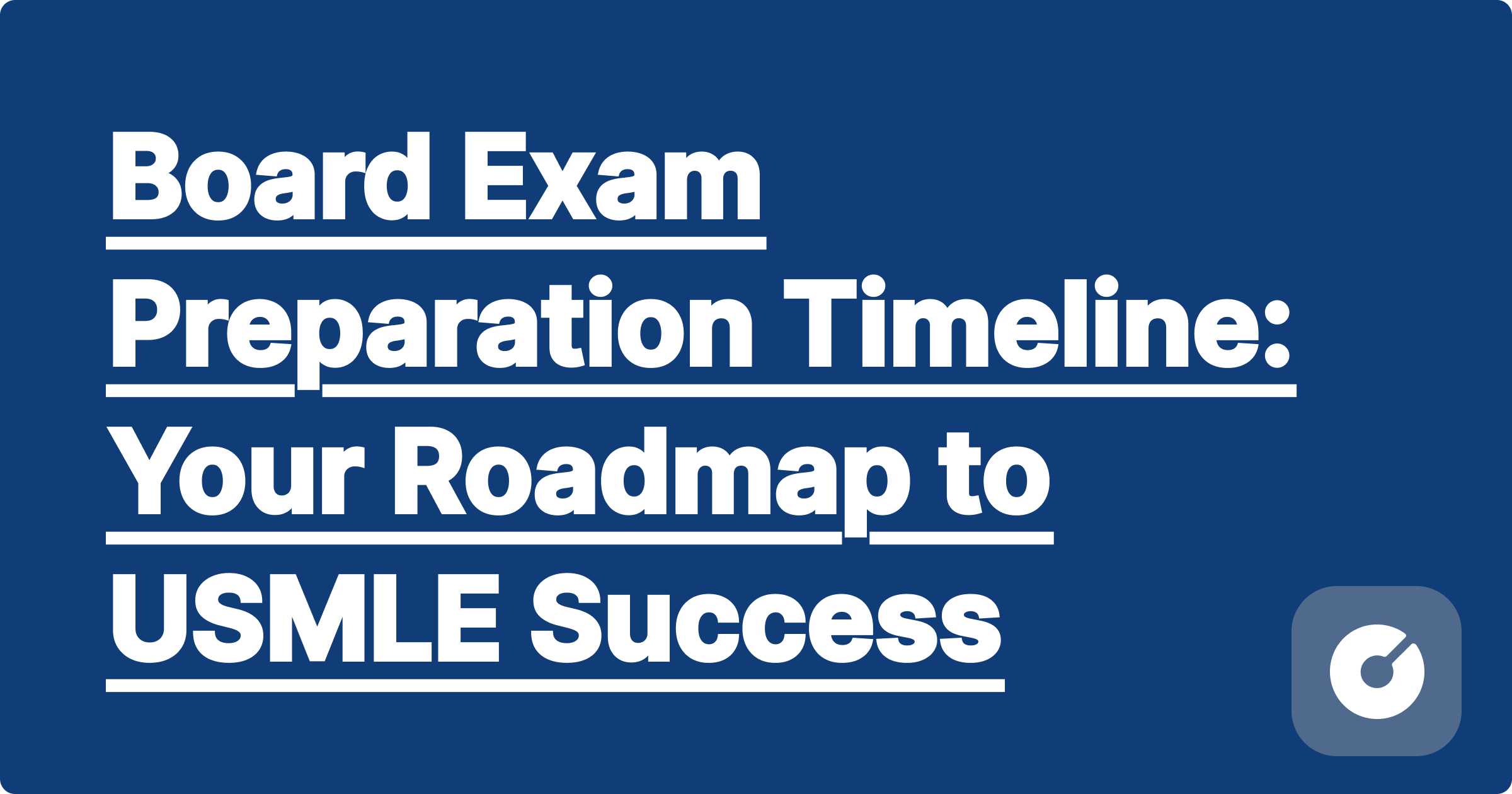
The United States Medical Licensing Examination (USMLE) is a critical hurdle for aspiring physicians. Passing all three steps – Step 1, Step 2 Clinical Knowledge (CK), and Step 2 Clinical Skills (CS) – is essential for securing a residency position and ultimately practicing medicine in the United States. This comprehensive guide provides a detailed timeline and actionable strategies to help you navigate the USMLE journey successfully. While precise 2024 data on pass rates may not be fully available at this time due to reporting lags, we will use the most recent data available and project trends.
The USMLE is a three-step examination assessing a medical student's ability to apply knowledge and clinical skills.
Step 1: Primarily focuses on pre-clinical sciences (basic sciences). It's a one-day, eight-hour computer-based exam. (While pass/fail is now implemented, a strong score still benefits your application.)
Step 2 CK: Assesses clinical knowledge and application of medical principles. It's a seven-hour computer-based exam.
Step 2 CS (Clinical Skills): This is a two-day, standardized patient-based exam. Note: CS is currently suspended.
Step 3: Focuses on application of medical knowledge and clinical judgment in the context of ambulatory and inpatient settings. It's a two-day, computer-based exam.
This timeline assumes a traditional four-year medical school program. Adjust this based on your specific curriculum and learning style.
Year 1 & 2 (Pre-Clinical Years):
Focus: Build a strong foundation in basic sciences. Active recall and spaced repetition are key.
Activities: Attend lectures, participate in study groups, utilize First Aid for the USMLE Step 1, Pathoma, SketchyMedical, and other high-yield resources. Begin incorporating practice questions early.
Step 1 Prep: Start lightly reviewing Step 1 material in your second year. Don't dedicate significant time yet, but familiarize yourself with the exam format and content.
Year 3 (Clinical Years):
Focus: Integrate clinical experiences with Step 2 CK preparation. Prioritize high-yield topics and practice clinical reasoning.
Activities: Attend clinical rotations, actively participate in patient care, utilize resources like UWorld, Amboss, and Clinical Cases. Begin dedicated Step 2 CK study approximately 3-4 months before the exam.
Step 2 CK Prep (Dedicated): Dedicate 6-8 weeks to focused study. Use practice questions extensively, review weak areas, and simulate exam conditions.
Year 4 (Clinical Years & Step 3):
Focus: Continue clinical rotations, complete Step 2 CK, and begin Step 3 preparation.
Activities: After Step 2 CK, begin reviewing Step 3 material alongside clinical rotations. Utilize resources like UWorld Step 3 and dedicated Step 3 review books. Schedule Step 3 after completing clinical rotations.
The cost of USMLE preparation can be significant. Here's a breakdown:
USMLE Application Fees: Approximately $800-$1000 total for all three steps. (Note: Prices may vary, consult the official USMLE website for accurate pricing).
Review Courses: Range from $1000-$3000+ per step, depending on the provider and features.
Qbanks (Question Banks): UWorld, Amboss, and other Qbanks typically cost around $300-$500 per step.
Books and Materials: Expect to spend $500-$1000 on textbooks, review books, and other learning materials.
Tutoring (Optional): Individual tutoring can range from $100-$300 per hour.
Total Estimated Cost: A conservative estimate places the total cost of USMLE preparation between $3000-$7000 or more, depending on your chosen resources and individual needs.
Create a Realistic Study Schedule: Develop a study plan that aligns with your learning style and clinical commitments.
Active Recall: Test yourself frequently using flashcards, practice questions, and self-testing.
Spaced Repetition: Review material at increasing intervals to improve long-term retention.
Utilize High-Yield Resources: Focus on resources known for their effectiveness and efficiency.
Practice Questions: Practice questions are crucial for identifying weak areas and improving test-taking strategies. Aim for a large volume of practice questions, at least 2000-3000 per step.
Join Study Groups: Collaborating with peers can enhance understanding and provide motivation.
Prioritize Self-Care: Maintain a healthy lifestyle, including adequate sleep, nutrition, and exercise. Burnout is a real threat.
Seek Mentorship: Connect with experienced medical students and physicians for guidance and support.
Sarah, a medical student at a highly competitive university, meticulously planned her USMLE preparation. She started early, utilizing a combination of lectures, high-yield textbooks, and Qbanks. She consistently reviewed material using spaced repetition, actively participated in study groups, and prioritized self-care. Her consistent effort resulted in high scores on all three steps, leading to a highly competitive residency match.
While precise 2024 data is not yet available for all schools, let's consider a hypothetical example:
University X:
Acceptance Rate: 5%
Average GPA: 3.8
Average MCAT Score: 518
These figures highlight the intense competition for admission to medical school. Strong academic performance throughout undergraduate studies is essential.
The USMLE is a challenging but achievable goal. By creating a comprehensive preparation timeline, utilizing effective study strategies, and managing financial resources wisely, you can significantly increase your chances of success. Remember to prioritize self-care, seek support from peers and mentors, and celebrate your achievements along the way. Your dedication and perseverance will pave the path to a fulfilling career in medicine. Start planning early, stay organized, and remember that consistent effort leads to lasting success.
Second Career Medical Students: Changing Paths to a Rewarding Career
Foreign Medical Schools for US Students: A Comprehensive Guide for 2024 and Beyond
Osteopathic Medicine: Growing Acceptance and Benefits for Aspiring Physicians
Joint Degree Programs: MD/MBA, MD/JD, MD/MPH – Your Path to a Multifaceted Career in Medicine
AMCAS Application Timeline: Your Month-by-Month Guide to Success in 2024
Community College to Medical School: Your Roadmap to Success
MCAT Study Timeline: Your 6-Month Comprehensive Plan for Success in 2024
GPAI Exam Preparation Your Personal Study Coach | GPAI - AI-ce Every Class
Medical School Study Strategies That Top Students Use: Ace Your Exams and Thrive
Stanford Medical Youth Science Program (SMYSP): Your Pre-Med Path to Success